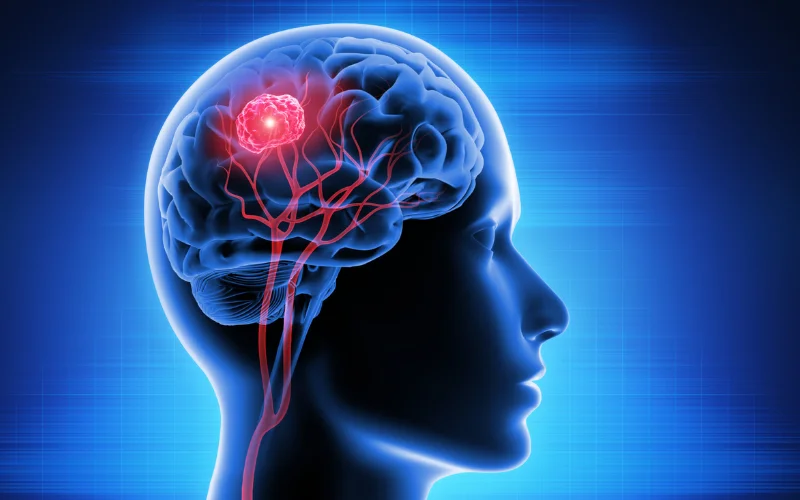Angina is a medical condition characterized by chest pain or discomfort that occurs when the heart muscle doesn’t get enough oxygen-rich blood. This condition is often a symptom of an underlying heart problem, most commonly coronary artery disease (CAD). Angina is not a disease itself but a symptom of heart disease, and understanding its various forms is crucial for effective management and treatment. Each type of angina has distinct characteristics, causes, and treatment options, making a thorough understanding essential for both patients and healthcare providers. This article aims to provide a comprehensive overview of the different types of angina, including their symptoms, causes, and treatment options, to help readers better understand this complex condition.
Key Takeaways
- Angina is a symptom of underlying heart disease, most commonly coronary artery disease (CAD).
- It presents as chest pain or discomfort due to reduced blood flow to the heart muscle.
- There are different types of angina: Stable Angina, Unstable Angina, Variant (Prinzmetal’s) Angina, and Microvascular Angina.
- Stable Angina is predictable and occurs with physical exertion or stress, managed by rest and medications.
- Unstable Angina is severe, occurs unexpectedly, and requires immediate medical attention.
- Variant Angina is caused by coronary artery spasms and typically occurs at rest, often at night.
- Microvascular Angina involves chest pain without major blockages in large coronary arteries, due to issues in tiny blood vessels.
- Effective management of angina includes lifestyle changes, medications, and sometimes surgical interventions.
- Early detection and proper management can significantly improve quality of life and reduce the risk of heart attacks.
What is Angina?

Angina, often referred to as angina pectoris, is a type of chest pain caused by reduced blood flow to the heart. The heart muscle requires a constant supply of oxygen-rich blood to function properly. When the arteries supplying blood to the heart narrow or become blocked, the heart muscle doesn’t get enough oxygen, leading to chest pain. Angina can feel like pressure, squeezing, fullness, or pain in the center of the chest. The discomfort may also radiate to the shoulders, arms, neck, jaw, or back. Angina is a symptom of an underlying heart problem, usually coronary artery disease (CAD), and it is essential to identify and treat the root cause to prevent more severe cardiac events like heart attacks.
Types of Angina

Angina is a condition characterized by chest pain due to different reasons like reduced blood flow to the heart. Understanding the different types of angina is crucial for proper diagnosis and treatment. Here, we delve into the main types of angina: Stable Angina, Unstable Angina, Variant (Prinzmetal’s) Angina, Microvascular Angina, and other less common types.
Stable Angina
Stable angina, also known as exertional angina, is the most common form of angina. It occurs predictably during physical exertion or emotional stress when the heart requires more oxygen than usual.
- Symptoms: Chest pain or discomfort, pressure, heaviness, tightness, pain radiating to shoulders, arms, neck, jaw, or back, shortness of breath, fatigue, dizziness.
- Causes: Coronary artery disease (CAD), atherosclerosis, physical exertion, emotional stress, cold weather, heavy meals.
- Treatment: Rest, nitroglycerin, beta-blockers, calcium channel blockers, lifestyle changes, medications to lower cholesterol, angioplasty, coronary artery bypass surgery.
Unstable Angina
Unstable angina is a more severe form of angina that occurs unexpectedly and can signal an impending heart attack. It does not follow a predictable pattern and can happen at rest.
- Symptoms: Sudden chest pain, pain lasting longer than stable angina, pain at rest, increasing frequency and severity of pain, shortness of breath, sweating, nausea.
- Causes: Rupture of plaque in coronary arteries, blood clots, severe atherosclerosis, reduced blood flow to the heart.
- Treatment: Immediate medical attention, medications (antiplatelet drugs, anticoagulants, beta-blockers, nitrates), lifestyle changes, angioplasty, coronary artery bypass surgery.
Variant (Prinzmetal’s) Angina
Variant angina, or Prinzmetal’s angina, is a rare form of angina caused by a spasm in the coronary arteries. It usually occurs at rest, often during nighttime or early morning hours.
- Symptoms: Severe chest pain at rest, pain typically occurring in cycles, pain often during sleep, shortness of breath, palpitations, dizziness.
- Causes: Coronary artery spasm, smoking, stress, exposure to cold, use of illicit drugs like cocaine.
- Treatment: Calcium channel blockers, nitrates, lifestyle changes, avoiding triggers, medications to control blood pressure and cholesterol.
Microvascular Angina
Microvascular angina, also known as Syndrome X, involves chest pain without significant blockages in the large coronary arteries. It is caused by issues in the tiny blood vessels of the heart.
- Symptoms: Chest pain during physical activity or stress, pain lasting longer than other types of angina, shortness of breath, fatigue, sleep disturbances.
- Causes: Dysfunction of the small coronary arteries, endothelial dysfunction, inflammation, stress, hormonal changes.
- Treatment: Medications (beta-blockers, nitrates, calcium channel blockers), lifestyle changes, physical therapy, stress management, medications to control blood pressure and cholesterol.
Decubitus Angina
Decubitus angina, also known as angina decubitus, occurs when a person is lying down. This type of angina is less common and can be a sign of severe coronary artery disease.
- Symptoms: Chest pain while lying down, pain relieved by sitting or standing, shortness of breath, fatigue.
- Causes: Severe coronary artery disease, increased pressure on the heart while lying down, heart failure.
- Treatment: Medications (nitrates, beta-block
Preventing Angina

Preventing angina involves adopting a heart-healthy lifestyle and managing risk factors. Here are some key strategies to help prevent angina:
Healthy Diet
A balanced diet rich in fruits, vegetables, whole grains, lean proteins, and healthy fats can help maintain heart health. Limiting saturated fats, trans fats, sodium, and added sugars is essential.
Regular Exercise
Engaging in regular physical activity, such as brisk walking, swimming, or cycling, helps improve cardiovascular health. Aim for at least 150 minutes of moderate-intensity exercise per week.
Stress Management
Chronic stress can contribute to heart disease. Techniques such as mindfulness, meditation, yoga, and deep breathing exercises can help manage stress levels effectively.
Avoid Smoking and Limit Alcohol
Smoking cessation and limiting alcohol intake are crucial for heart health. Smoking damages the blood vessels, while excessive alcohol can increase blood pressure and contribute to heart disease.
Conclusion
Understanding the different types of angina is crucial for proper diagnosis and treatment. By recognizing the symptoms, causes, and treatment options for each type, you can take proactive steps to manage your heart health. Whether it’s through lifestyle changes, medications, or surgical procedures, effective management of angina can significantly improve your quality of life and reduce the risk of more severe heart conditions. Remember, if you experience any form of chest pain, it’s essential to seek medical advice promptly to ensure appropriate care and treatment.
FAQs
What is angina and how is it different from a heart attack?
Angina is chest pain caused by reduced blood flow to the heart, often due to narrowed or blocked coronary arteries. Unlike a heart attack, angina does not cause permanent heart damage. A heart attack occurs when a coronary artery is completely blocked, leading to the death of heart muscle tissue. Angina is a warning sign that the heart is not getting enough oxygen, while a heart attack is a medical emergency requiring immediate attention.
Can lifestyle changes help manage angina?
Yes, lifestyle changes play a crucial role in managing angina. Adopting a heart-healthy diet, engaging in regular physical activity, quitting smoking, managing stress, and maintaining a healthy weight can help reduce the frequency and severity of angina episodes. These changes can also improve overall cardiovascular health.
When should I seek medical attention for chest pain?
You should seek immediate medical attention if you experience sudden, severe chest pain, pain that lasts longer than a few minutes, pain that spreads to your arms, neck, jaw, or back, shortness of breath, sweating, nausea, or dizziness. These could be signs of a heart attack, and prompt medical intervention is crucial.






